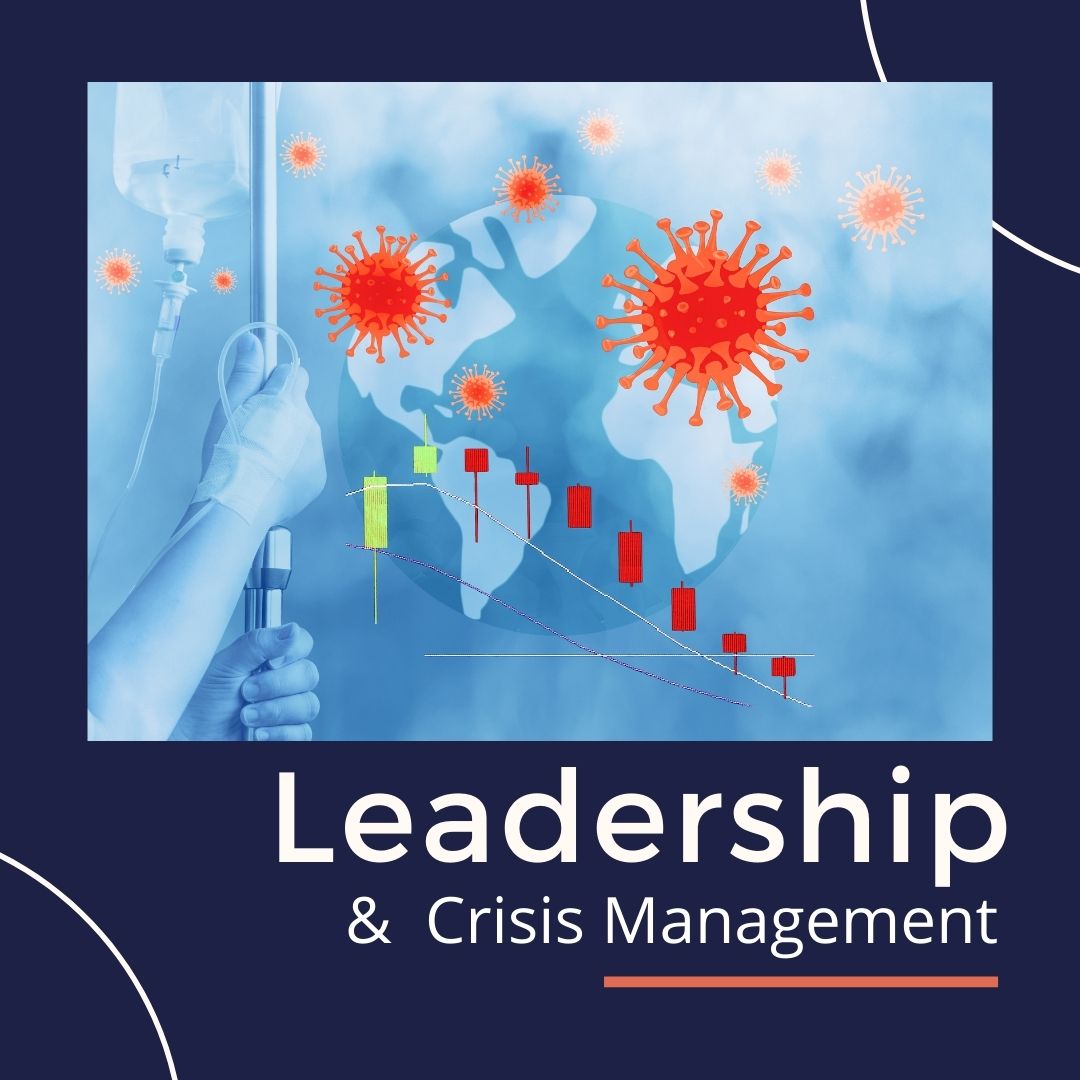17 Dec What Can Governments Learn from Leadership Teams?

The Coronavirus pandemic that has been plaguing our economies and lives for almost a year now has been a tremendous leadership test for governments worldwide. Unfortunately, one can now safely say that only a handful of government teams passed the test of strong leadership and resolute, clear strategy. More often than not, governments all over the world have given a poor image of what strong leadership should be.
I am not blaming them for trying their best. Hey, the job is extremely difficult, and I am not sure I would want it. Whatever governments do, people will complain one way or an other. There’s just no way of pleasing everyone here.
If we look at the crisis management from a pure leadership standpoint though – and this is the only aim of my article – there is an abysmal lack of strong and cohesive leadership at the top. If our governments were the C-level leadership teams in multinational companies, they would mostly fail and their companies would likely go bust.
Being connected to a lot of friends, relatives, and colleagues in multiple countries across several continents, I have been able to compare how different governments have addressed the corona pandemic worldwide. Here are 4 behaviors I have identified, which in my view, clearly pinpoint to why government are failing to show strong leadership in the management of the corona crisis. One thing that struck me as I spotted these flaws is how close they are to Lencioni’s 5 dysfunctions of a team.
1. There is a lack of trust at the top
I will make the point that very few people in governments today really focus on what is best for their “team”, i.e., government and country, and rather always give in to the behavior of placing their self-interest, career aspiration, and ego well above the rest.
As a result, people are in a constant competition among themselves to be the next Minister of such thing, or next in line to be the President. With such behavior, there can only be but a very limited trust among people.
In the end, that lack of trust translates into a fear of showing weaknesses – any good leader knows though that they can only succeed when they ask for help or admit when they don’t know – or a fear of making mistakes. What this creates in the end is conflict avoidance.
A strong leadership team would: Show vulnerability with each other, by admitting they do not know, by asking for help, and by admitting mistakes. When people on the leadership team would be at a level where everything is transparent among them, trust would be created, and from here, only the positive form of conflict would arise, i.e., discussion focused on addressing an issue, not focusing on people or hidden agendas.
2. There is no clarity and buy-in at the top
In many instances, I have seen decisions taken by governments, which when applied, seemed to diverge completely from what had been announced just hours earlier. Sometimes, it was evident, in the communication of several ministries, that everybody was talking from a different place instead of showing a common voice.
This happens because there is no clarity and buy-in at the top. Why is that? Go back to my first point: Conflict avoidance. Real, sound buy-in rarely happens in governments because people do not trust each other. As a result, people don’t voice their opinion or concerns, and if they do not agree with a decision, they will not say it. Most of the times, they will however accept the decision, giving a fake image of a consensus among the team.
This is a dangerous place to be for a leadership team: Consensus brings frustration, delay and ends up in major dysfunctions (unclear communication in media, constant change of mind, etc.) This happens very often when teams fall prey to the group pressure effect – I recommend you read Hans-Christian Andersen’s The Emperor’s New Clothes for a striking example of this.
A strong leadership team would: Let people on the team share and voice their opinion and concern about a topic. That does not mean they will agree with the final decision (that would be consensus at least on the surface), but they will have gotten past the emotional point of expressing their thoughts. In the end, even if they don’t agree with the final decision, they will still support it. Then, the team leader would bring clarity to everyone by ensuring no-one starts communicating about a decision without all ambiguity and assumptions being removed.
3. Governments lack a strong system of accountability
Obviously, once 1 and 2 above gangrenated the team, there is no way people can be held accountable for their actions. To be fair, governments are rarely structured to provide the most efficient level of accountability as far as leadership is concerned.
In a system like that in France for instance, the Prime Minister (the Head of the Government) is accountable to the French Parliament. The Ministers are not “reporting” to him though. The President of the French Republic is essentially only accountable to the people who have elected him.
As we see, although such a system does keep people accountable vis-à-vis the Constitution of the French Republic and the democratic institutions, it hardly creates any accountability in the government itself, i.e., among the team. What this creates instead is a sense of detachment from the team that matters the most, the Government, with the Ministers in that team not feeling accountable to each other and to the Head of Government and Head of State.
The consequence of such behavior is that each Minister focuses more on their other team (the ministry they head), playing it in essence solo.
A strong leadership team would: Leverage the trust and the dynamics established in the team to create accountability, not only to the leader of the team, but also among each person on the team. In less than efficient teams, there is often the belief that the team leader is the only person one has to be accountable to. It is wrong. In the best teams, people go to their peers for accountability: If someone is not committed to do their job correctly, this impacts the whole team. Anyone on the team should hold the person accountable then. This is a responsibility shared by the whole team, not something exclusive to the leader.
4. There is no sense of urgency
What has been really striking in some countries is the lack of sense of urgency despite the mounting corona crisis. In my home country, France, past the first lockdown, the government started to re-focus on other priorities (e.g., the pension reform). They called victory too soon, people reverted to the pre-covid habits or became complacent with general guidance and recommendations, and the result was almost a second lockdown.
When governments cannot create a strong sense of urgency, cannot create that image for the public that the house is on fire, there is no way efficiency can be created to deal with the crisis.
A strong leadership team would: Make a strong case that this is a life or death situation, and that if no change happens, the worst is yet to come. There is no other way to create that sense of urgency for people.
Not everything is bad when we witness how different governments in the world acted. For instance, South Korea is often cited as a very good example of good management of the coronavirus crisis. Arjen Boin, a political scientist at Leiden University in the Netherlands has written a book on good crisis management. It sheds light on possible reasons for South Korea’s success in managing the crisis.
Boin gives 5 aims of good crisis management:
1. Offer credible explanation of what is happening and show that things are already in place to respond to the crisis (infrastructure, procedures, equipment, etc.)
2. Offer strong guidance
3. Instill hope
4. Show empathy
5. Suggest leaders are in control
Looking at how President Moon Jae-In and his government managed the corona crisis in South Korea, we see they ticked all the boxed above: There was a rapid response. The country had apparently started to stockpile coronavirus testing kits long before the outbreak (What Boin termed establishing the infrastructure for “sense making” of the situation). The President and government’s messaging was also clear and consistent all along. The public was told to view the outbreak as a national emergency. There was a wartime sense of purpose created.
It is clear that governments probably cannot function like standard leadership teams. However, in my opinion, governments could still make significant progress towards better crisis management by following a few leadership concepts that have proven their value over time: Trust among people, shared accountability to name a few.
For comments or questions, please visit my website or contact me at pascal@p-m-coaching.com


